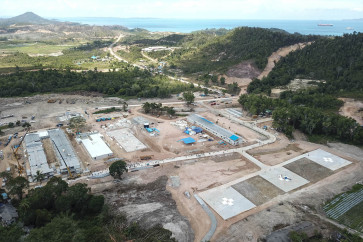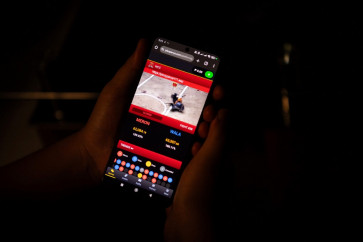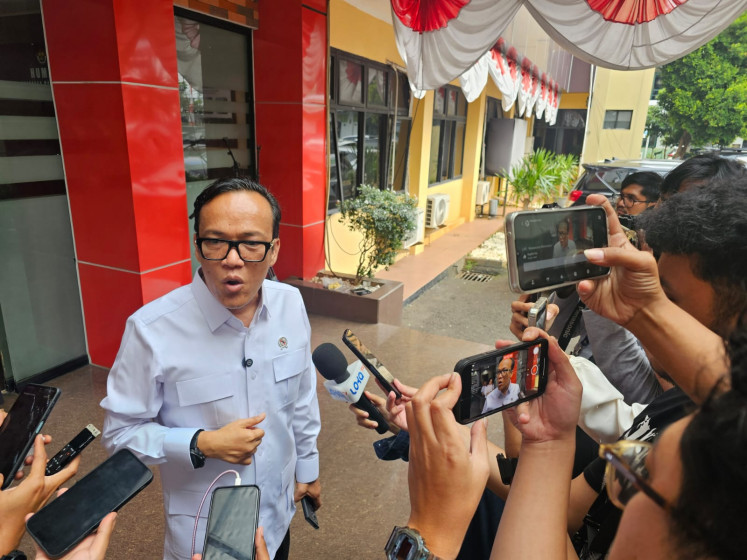Popular Reads
Top Results
Can't find what you're looking for?
View all search resultsPopular Reads
Top Results
Can't find what you're looking for?
View all search resultsUNESCO names Mexico’s Tlaxcala cathedral, Chile mummies as world heritage
Change text size
Gift Premium Articles
to Anyone
A
cathedral and monastery in Mexico where some of the first Franciscan missionaries to New Spain converted indigenous people to Christianity was on July 27 listed by UNESCO as a World Heritage Site.
Chile's Chinchorro mummies, the oldest in the world to have been purposefully preserved by humans, were also added to UNESCO's World Heritage List.
Our Lady of the Assumption, located in Tlaxcala southeast of Mexico City, was a cornerstone of evangelism during the early stages of Spanish colonization of the Americas.
The complex was one of the first of its kind, constructed with the help of local workers in 1526, years before the conquest of the Inca empire in South America.
Inside the cathedral, an inscription on the pulpit reads: "Here the Holy Gospel had its beginning in this New World."
The complex's construction “totally transformed the vision of the world conceived until then”, said Jose de la Rosa, director of the National Institute of Anthropology and History in Tlaxcala.
It is one of more than a dozen monasteries built by Franciscan, Dominican and Augustinian missionaries some five centuries ago on the slopes of the Popocatepetl volcano.
Fourteen of the early 16th century monasteries were inscribed on the UNESCO World Heritage List in 1994, but the Tlaxcala complex was omitted at the time, despite its historical importance.
Our Lady of the Assumption "served as a spiritual, political, architectural and aesthetic experiment" in evangelism and the establishment of New Spain, according to Mexico's Culture Ministry.
Its originality is reflected in elements such as a freestanding steeple tower, open atrium and wooden coffered ceiling, reminiscent of Spain's Mudejar style of Islamic-influenced architecture.
Our Lady of the Assumption "dominates both social and religious activity and that has survived from the 16th century to the 21st century," said Gelvin Xochitemo, an architect specialized in historical monuments.
"It continues to be a meeting point, a social place, of coexistence," he said.
The mummies
The mummies, which were found in the north of Chile at the start of the 20th century, are more than 7,000 years old, meaning they pre-date the Egyptian mummies by two millennia.
The United Nations' cultural organization announced on Twitter that it had added the "settlement and artificial mummification of the Chinchorro culture" to its prestigious list during a virtual meeting chaired by China.
"UNESCO is validating on an international level, through different experts, that the settlements and artificial mummification of the Chinchorro culture has exceptional value, that it has a global importance," Chilean anthropologist Bernardo Arriaza told AFP.
The Chinchorro were fishers and hunter gatherers more than 7,000 years ago in an area where the desert and Pacific Ocean meet in what is today the south of Peru and north of Chile.
So far, more than 300 mummies have been found, including red, black and bandaged ones. The mummification process consisted of removing the organs, intestines and tissue.
The skin was then ripped off the corpse and the body rebuilt using sticks and animal hair, while a thick head of black hair was sewn onto the scalp.
Finally, the mummies were painted red or black using earth, pigments, manganese and iron oxide.
"These bodies are very finely made by specialists. There's a subtlety, a creativity by these first populations," added Arriaza, who is the director of the Chinchorro Center at the Tarapaca University in the city of Arica.
Why the Chichorro culture mummified their dead remains a mystery.
In 2005, Arriaza developed a theory that it could have been linked to high levels of arsenic poisoning in the water that could have produced premature births, miscarriages, underweight children and high infant mortality.
He suggested the mummification was “an emotional response from parents faced with these painful losses, so they painted them, dressed them up and every day this technique became more elaborate”.










